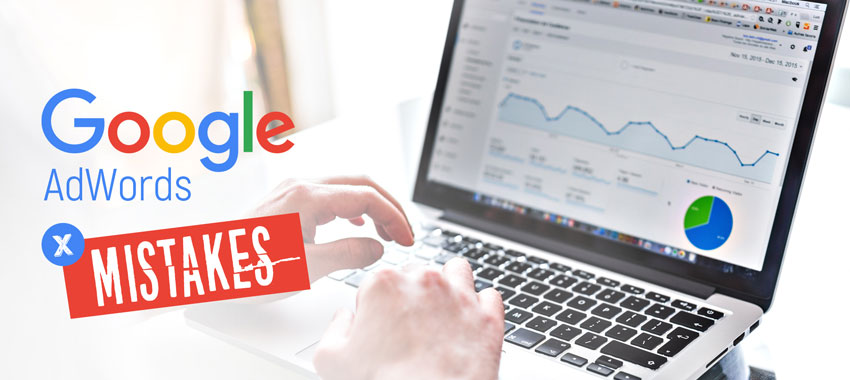
In our modern world, the internet and smartphones help to enhance and streamline everything we do, and that includes how people shop for goods and services. In order to be effective marketers, this is something that we must both recognise and take full advantage of, which is why online endeavours are essential.
One of the most popular mediums for these is Google Ads. Managed properly, it can deliver results that give you a great return on investment; used poorly, it could cost more money that it’s bringing in. That’s why we’ve written this article to help you make the most of it.
Key Takeaways
- Effective Keyword Grouping: Avoid the mistake of grouping keywords incorrectly in your Google Ads campaigns. Create ad groups with fewer than 20 carefully chosen keywords to improve ad relevance and increase click-through rates.
- Utilise Different Keyword Matches: Maximise the effectiveness of your campaigns by leveraging different keyword match types—exact match, phrase match, and broad match—to reach your target audience more effectively. Start with exact matches and expand to broader matches as needed for optimal conversions.
- Employ Negative Keywords: Don’t overlook the importance of negative keywords to exclude irrelevant searches and improve ad targeting. Use insights from Google Analytics to identify negative keywords and refine your campaigns accordingly.
Mistake #1: Incorrectly Grouping Keywords
Those who use Google Ads will know that it gives you the ability to break keywords down into ad groups, in order to help manage multiple types of campaigns, but lots of people fail to take advantage of this, which is a mistake that you really don’t want to make. Rather than lumping all of your keywords into one group so that the same ad is shown to everyone and your click-through is reduced, keep your groups down to 20 carefully chosen words or less to increase effectiveness.
Mistake #2: Using Incorrect Keyword Matches
Another common mistake is for individuals to ignore their ability to use broad match, phrase match, and exact match keywords. Each of these has a unique function, one that can be used to the advantage of your business, so make sure that you know how to utilise them to your benefit. We recommend starting with exact matches, before expanding into phrase matches and broad matches as and when they’re needed to effectively deliver a maximal number of conversions.
Mistake #3: Not Using Negative Keywords
Don’t forget to also take advantage of your ability to exclude keywords that are not a complementary match for your product. Google Analytics is great for helping you to identify these, as it will provide more in-depth information than that supplied by Ads regarding specific keyword searches.
Mistake #4: Relying On Creativity Rather Than Numbers
Everybody wants to love their ad copy, especially if they’ve written it themselves, but if you’re an enterprising entrepreneur trialling various options to see what works best, always make your final decision based on click-through rates and/or conversions rather than your personal preferences. Test, test, and then test again, only stopping when you have a final result that delivers the sales you’ve been seeking.
Mistake #5: Not Bidding On Your Own Brand
A lot of retailers and service providers make the mistake of not bidding on their own brand, assuming that because they rank for it, they needn’t advertise for it. This is something that other companies can capitalise on. Bearing in mind that those searching for your company are more likely to convert than any other group, make sure that you bid the highest for yours.
Mistake #6: Not Knowing The Lifetime Value Of Customers
If you’ve never calculated the LTV of your customers, then you won’t ever really know how much to spend on Ads per acquisition. This is something you ought to rectify. Take a look at how to calculate yours, do your sums, and then manage your campaigns accordingly, in the newfound knowledge that your strategy makes strong financial sense.
Mistake #7: Failing To Test Optimal Ad Position
Did you know that if you’re attempting to improve branding, it’s recommended that you’re in either the first or second ad position, whereas if you wish to get better results, research suggests you’ll do better in positions three to five? Although this may go against everything you think you know, it’s absolutely true, which is why you really need to test which ad position works best for your business. This can be easily achieved by raising or lowering your bid on cost per click to see how much you actually need to be paying to get conversions.
Mistake #8: Not Directing Visitors To The Appropriate Product Or Category Page
Perhaps the biggest mistake of all for those utilising Google Ads is a failure to direct customers to the appropriate product or category page, instead sending everyone to your home screen and expecting them to do all of the legwork for themselves. Take people straight to what they’re searching for instead, and you’ll soon see an increase in conversions.
UPDATE: Mistake #9: Not Verifing Your Business When Asked
One common mistake in Google Ads management is failing to verify your business with Google. This oversight can lead to your ads being paused or your account being restricted, significantly impacting your advertising efforts. Always keep an eye out for verification banners in your Google Ads account, as they alert you to necessary actions to maintain compliance. Ensuring your business is verified not only legitimizes your ads but also helps build trust with potential customers, enhancing your overall campaign performance.
Frequently Asked Questions
Why is effective keyword grouping important in Google Ads campaigns?
Effective keyword grouping is crucial in Google Ads campaigns to enhance ad relevance and improve click-through rates. By organizing keywords into ad groups with fewer than 20 carefully chosen words, advertisers can ensure that each ad is tailored to a specific set of keywords, increasing its effectiveness in reaching the target audience.
How can negative keywords improve ad targeting in Google Ads?
Negative keywords play a vital role in refining ad targeting by excluding irrelevant searches that are not a complementary match for the product or service being advertised. By utilising insights from tools like Google Analytics, advertisers can identify and add negative keywords to their campaigns, ensuring that ads are shown to the most relevant audience.
Why is bidding on your own brand important in Google Ads?
Bidding on your own brand keywords in Google Ads is essential to maintain visibility and prevent competitors from capitalising on your brand’s search traffic. Since users searching for your brand are more likely to convert, bidding on your brand ensures that your ads appear prominently for brand-related searches, driving traffic and conversions.



